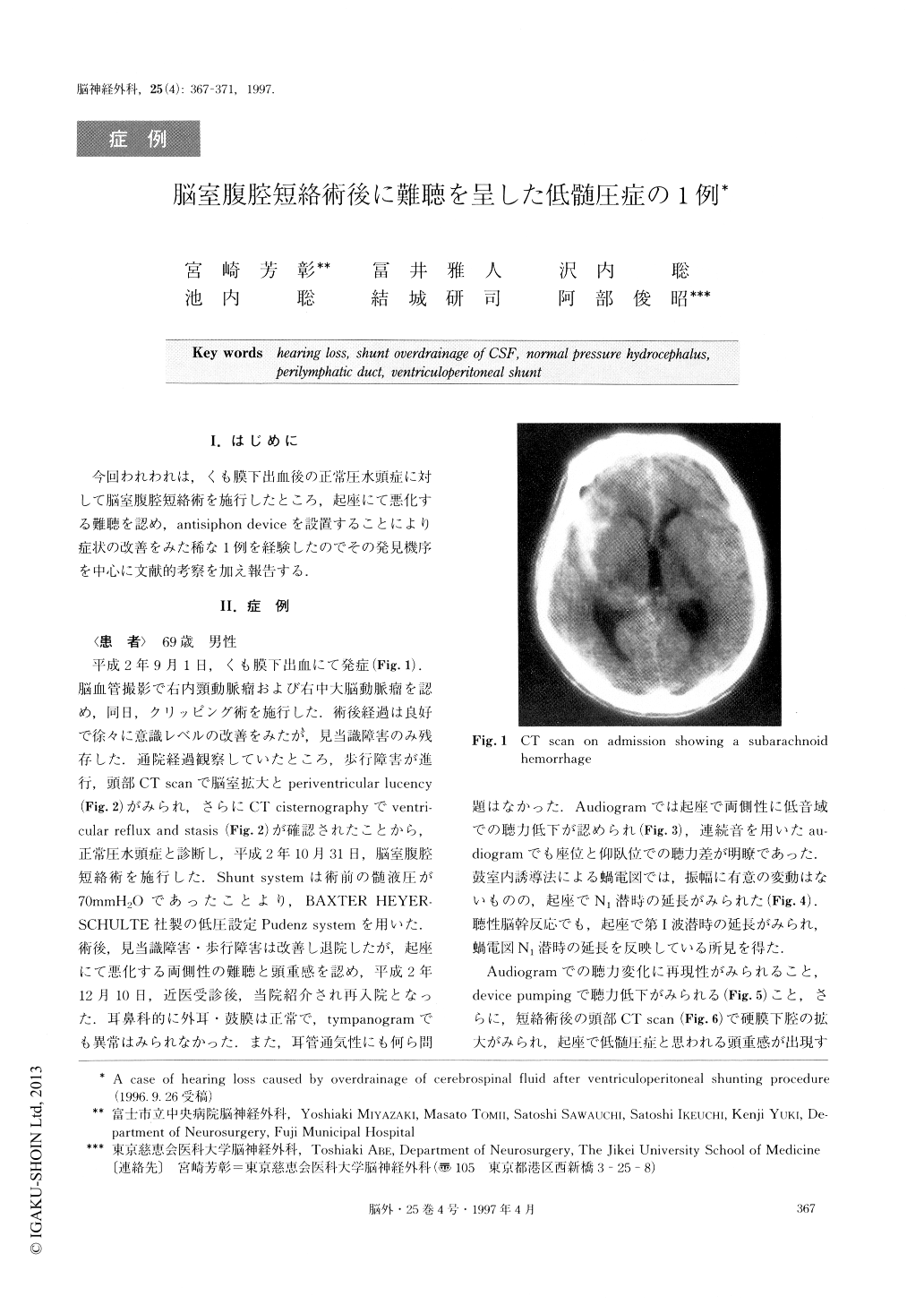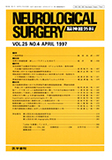Japanese
English
- 有料閲覧
- Abstract 文献概要
- 1ページ目 Look Inside
I.はじめに
今回われわれは,くも膜下出血後の正常圧水頭症に対して脳室腹腔短絡術を施行したところ,起座にて悪化する難聴を認め,antisiphon deviceを設置することにより症状の改善をみた稀な1例を経験したのでその発見機序を中心に文献的考察を加え報告する.
We describe a case of intracranial hypotension syn-drome due to overdrainage of cerebrospinal fluid pre-sented with hearing loss after ventriculoperitoneal shunting procedure.
A 69-year-old man suffering from subarachnoid hemorrhage presented with an angiogram showing two aneurysms, one of the right internal carotid and one of the middle cerebral artery. Neck clipping was per-formed. One month later, he developed normal pressure hydrocephalus (NPH), which was treated by ventri-culoperitoneal shunting procedure using low pressure Pudenz system. Trias of NPH were improved by inser-tion of shunt system. However, he complained of hear-ing loss which was worsened by upright position and improved by lying down.
Such kinds of phenomenon were demonstrated by audiogram showing the transitory decrease of hearing and electrocochleography showing the elongation of N1 latency at upright position. These data suggested that his hearing loss was caused by inner ear or auditory nerve lesion. After the shunt system was replaced into the antisiphon device, his hearing disturbance improv-ed. Axial computed tomography of bone window at the level of orbitomeatal line demonstrated widely perilym-phatic duct on both sides.
This finding suggested that the fluctuation of in-tracranial pressure was easily transmitted into the coch-lear through the widened perilymphatic duct, resulting in hearing disturbance.

Copyright © 1997, Igaku-Shoin Ltd. All rights reserved.


